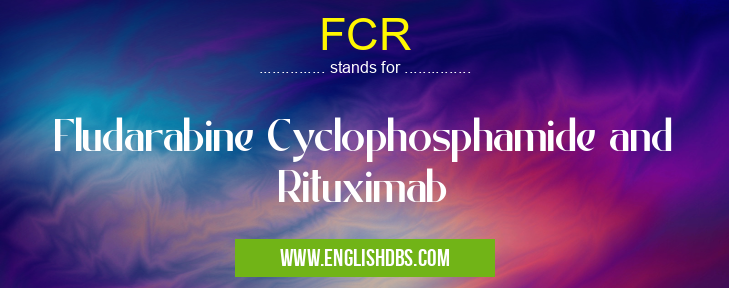What does FCR mean in UNCLASSIFIED
FCR is an abbreviation for the medical term Fludarabine Cyclophosphamide and Rituximab. It is a combination of three drugs used in the treatment of chronic lymphocytic leukemia (CLL).

FCR meaning in Unclassified in Miscellaneous
FCR mostly used in an acronym Unclassified in Category Miscellaneous that means Fludarabine Cyclophosphamide and Rituximab
Shorthand: FCR,
Full Form: Fludarabine Cyclophosphamide and Rituximab
For more information of "Fludarabine Cyclophosphamide and Rituximab", see the section below.
Introduction: FCR Abbreviation
FCR Components
- Fludarabine: A chemotherapy drug that destroys rapidly dividing cells, including cancer cells.
- Cyclophosphamide: Another chemotherapy drug that damages DNA and inhibits cell growth.
- Rituximab: A monoclonal antibody that targets and destroys B-cells, a type of white blood cell that is often involved in CLL.
Uses of FCR
FCR is primarily used as a first-line treatment for patients with previously untreated CLL. It can also be used to treat patients who have relapsed or are refractory to other treatments.
Advantages of FCR
- High Efficacy: FCR has been shown to be highly effective in inducing long-term remission in patients with CLL.
- Combination Therapy: The combination of three drugs provides a synergistic effect, targeting different mechanisms of cancer growth.
Disadvantages of FCR
- Potential Side Effects: FCR can cause side effects such as low blood counts, fatigue, nausea, and hair loss.
- Immune Suppression: Rituximab can suppress the immune system, making patients more susceptible to infections.
Essential Questions and Answers on Fludarabine Cyclophosphamide and Rituximab in "MISCELLANEOUS»UNFILED"
What is FCR?
FCR is a combination of three drugs: Fludarabine, Cyclophosphamide, and Rituximab. It is commonly used to treat certain types of non-Hodgkin lymphoma.
How is FCR administered?
FCR is typically given intravenously (IV) over several months. The specific dosing schedule will vary depending on the individual patient's needs.
What are the side effects of FCR?
Common side effects of FCR include nausea, vomiting, fatigue, hair loss, and low blood counts. More serious side effects, such as infections and organ damage, are also possible.
What is the efficacy of FCR?
FCR has been shown to be effective in treating certain types of non-Hodgkin lymphoma, particularly in patients with advanced disease. Studies have shown high response rates and improved survival outcomes in patients treated with FCR.
What are the contraindications to FCR?
FCR is not recommended for patients with severe heart or kidney disease, active infections, or certain other medical conditions. It is also not recommended for pregnant women or women who are breastfeeding.
How long does FCR treatment typically last?
The duration of FCR treatment varies depending on the individual patient's situation. In most cases, treatment lasts for several months. However, some patients may require longer or shorter courses of treatment.
Final Words: FCR is a commonly used combination therapy for the treatment of chronic lymphocytic leukemia. It has shown high efficacy but requires careful monitoring for potential side effects. Patients should consult with their healthcare provider to discuss the risks and benefits of FCR before undergoing treatment.
FCR also stands for: |
|
| All stands for FCR |
